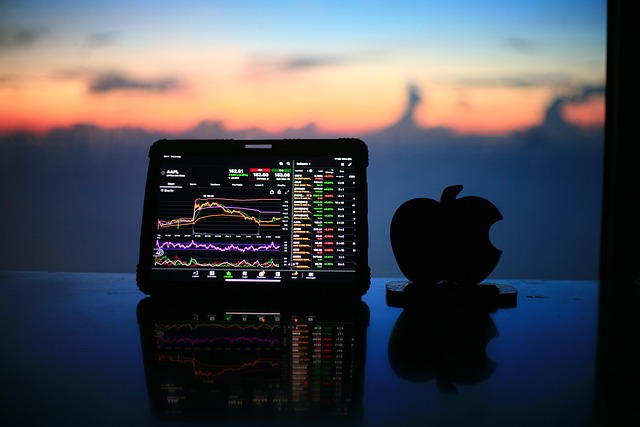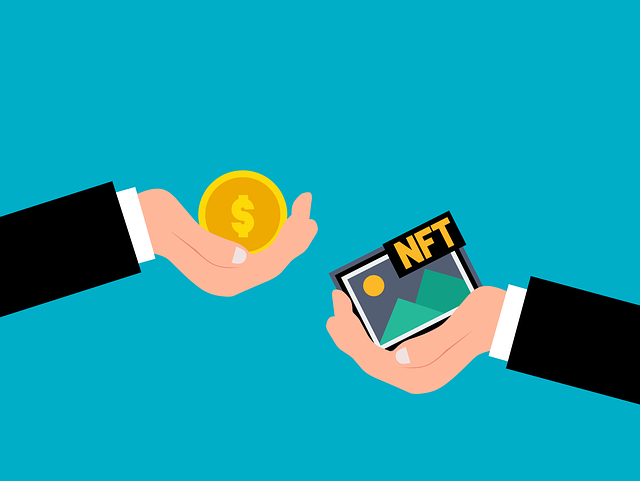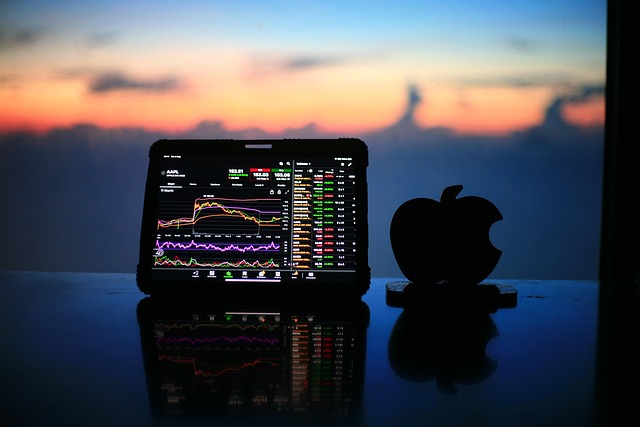Best Crypto Trading Platform Mexico: Top Picks
Author: Jameson Richman Expert
Published On: 2025-11-02
Prepared by Jameson Richman and our team of experts with over a decade of experience in cryptocurrency and digital asset analysis. Learn more about us.
Best crypto trading platform Mexico — this guide helps Mexican traders and investors choose the right exchange by comparing liquidity, fees, fiat on‑ramps (MXN), security, regulation, user experience, and product offerings. Whether you want a local platform for easy Mexican peso (MXN) deposits, a global exchange with deep liquidity, or a derivatives venue for leverage trading, this article explains the tradeoffs, provides actionable steps to open and secure accounts, and links to expert resources for trading volume, fees, closing trades, and bot strategies.

Why choosing the right platform matters
Choosing the right platform affects execution costs, the range of available coins, order execution speed, margin/leverage options, and your legal/tax reporting obligations. A poor choice can raise trading costs (high spreads and hidden fees), increase counterparty risk, or complicate withdrawals. This guide focuses on platforms that are widely used by Mexican traders and explains how to evaluate them for your goals.
Top factors to evaluate — quick checklist
- Fiat support (MXN): Can you deposit and withdraw Mexican pesos via SPEI, linked banks, or local cash networks?
- Liquidity & daily volume: Higher liquidity reduces slippage on large orders. See an in‑depth discussion on crypto trading volume in this analysis on daily trading volume for traders and investors.
- Fees and spreads: Maker/taker fees, deposit/withdrawal costs, and spreads matter. Read a practical guide to fees for professionals for fee structure insights.
- Security & custody: Cold storage, insurance, bug bounty programs, hardware wallet compatibility, and robust 2FA.
- Regulation & compliance: KYC, AML, and local law alignment — consult SAT tax guidance for reporting obligations (Servicio de Administración Tributaria).
- Products: Spot, margin, futures, staking, savings, P2P, OTC, and API for algorithmic traders.
- User experience & customer support: Mobile apps, fiat on/off ramps, live chat, and Spanish language support.
Best crypto trading platforms used in Mexico — overview
This section looks at the most relevant platforms for Mexicans: local exchanges, large global centralized exchanges, and derivatives-focused platforms. Use the descriptions to match your primary needs: simple fiat on‑ramp, low fees, derivatives, or advanced execution tools.
Bitso — Best local exchange for MXN and regulatory alignment
Bitso is Mexico’s largest native exchange and the default choice for many Mexican users. Strengths include:
- MXN support: Native deposits and withdrawals via SPEI and linked bank transfers make funding simple.
- User experience: Spanish‑native UI, strong mobile app, and local customer support.
- Regulatory engagement: Active with Mexican regulators and a track record of compliance.
- Products: Spot trading, OTC services, remittance rails, and limited custody solutions.
Best if you want straightforward fiat on‑ramps and a Mexican company that understands local payment rails. Consider Bitso for primary fiat holdings, but compare fees and available tokens with larger global venues.
Binance — Deep liquidity and product breadth
Binance is one of the world’s largest exchanges by volume and offers an unmatched range of tokens, products (spot, margin, futures, saving, staking), and advanced order types. Advantages and caveats:
- Liquidity: Very deep order books reduce slippage for large orders. For perspective on daily volumes and why liquidity matters, read this detailed analysis of crypto daily trading volume.
- Product breadth: From basic spot pairs to advanced derivatives, earning programs, and API access for algorithmic trading.
- Fiat options: Binance supports P2P MXN in many regions and allows bank transfers or third‑party gateways in some countries. Availability in Mexico can vary by time and regulatory status — check the platform's local options and KYC requirements.
- Security: Large-scale infrastructure and experience, but also a bigger target; enable all recommended security features.
If you want to open a Binance account, you can register here: Open a Binance account (referral).
Coinbase & Kraken — Compliance-first and beginner-friendly
Coinbase and Kraken emphasize regulatory compliance and simplified user flows. They are strong choices for newcomers who prioritize transparent fees and a reliable reputation. Coinbase’s educational resources and Kraken’s long track record and strong security policies appeal to conservative traders who accept a narrower token list.
Bybit, Bitget, MEXC — Derivatives and advanced trading
Derivatives exchanges such as Bybit, Bitget and MEXC are popular for leveraged traders due to competitive funding rates, high leverage, and active order books on perpetual futures.
- Bybit: Good for futures and perps with a professional interface. If you need guidance on trade management, this expert guide on how to close a trade on Bybit is useful. Open a Bybit account here: Bybit referral link.
- Bitget: Popular for copy trading and derivatives — register via this referral: Bitget referral.
- MEXC: Wide token selection, lower‑tier altcoins, and competitive futures fees — sign up with: MEXC referral.
These platforms can offer low fees and advanced order types, but be aware of regulatory limitations and ensure you understand margin and liquidation mechanics.

How to pick the best crypto trading platform Mexico — step-by-step
Follow this decision framework to select the platform that fits your goals.
- Define your primary use case: Are you buying and holding (HODL), day trading, arbitraging, using leverage, or running bots? Example: If you want to run high-frequency strategies, prioritize APIs, low taker fees, and high liquidity.
- Confirm MXN fiat options: If you need regular MXN deposits, choose an exchange with SPEI and local bank support (e.g., Bitso). Otherwise, P2P or stablecoin routes (USDT via P2P) are alternatives on platforms like Binance.
- Compare fees: Look at maker/taker rates, deposit/withdrawal fees, and spread. For professionals, this practical guide to fees explains common fee traps and negotiation tactics.
- Check liquidity on pairs you trade: Use order book depth and volume data to estimate slippage on your typical trade sizes. See daily trading volume analysis for context on why volume matters.
- Evaluate security & custody: Choose platforms with cold storage, transparent proof-of-reserves (if available), and strong 2FA/MFA options.
- Confirm regulatory & tax implications: Ensure you can export transaction history for SAT reporting and that the exchange supports KYC/AML processes.
Practical examples — matching platforms to goals
Beginner Buy & Hold (MXN deposits)
- Recommended: Bitso for direct MXN transfers and straightforward UX.
- Alternative: Binance P2P to buy USDT with MXN, then trade on Binance for a wider token list. Use the Binance referral to get started: Register Binance.
Day trading and low-latency execution
- Recommended: Binance or Bybit for deep liquidity and low fees. Use limit orders and API execution for best fills.
- Actionable tip: Use API rate limits, set a maker order strategy to lower fees, and monitor order book depth to avoid hidden slippage.
Leverage trading and derivatives
- Recommended: Bybit, Bitget, MEXC — compare funding rates and margin systems. Open Bybit with this referral: Bybit invite.
- Important: Understand liquidation mechanics, isolated vs cross margin, and how funding rates affect carry trades.
Algorithmic trading and bots
- Recommended: Binance or Bitget for robust APIs and community bot support. Before using bots, read the smart guide on Binance trading bot strategies and how to withdraw profits safely to avoid custody surprises.
- Actionable tip: Use separate accounts for bots and manual trading, set strict risk parameters and withdrawal whitelists.
Fees, spreads, and hidden costs — what to watch
Fees are not only maker/taker percentages. Hidden costs include spreads, deposit/withdrawal fees, network congestion costs, and conversion fees when moving between fiat and stablecoins. A practical guide to fees explains how professionals break down total trading cost per trade.
- Maker vs Taker: Makers add liquidity (post-limit orders) and usually pay less or receive rebates; takers remove liquidity (market orders) and pay more.
- Spread: On low-liquidity altcoins, the bid-ask spread can exceed listed fees and dominate costs.
- Withdrawal costs: Exchanges may charge fixed crypto network fees or set premium fees for instant fiat withdrawals.
Always calculate expected total cost per trade: fees + expected slippage + funding costs (for leveraged positions).

Security checklist before you deposit
Security should be non-negotiable. Follow this checklist:
- Enable two-factor authentication (2FA) — prefer authenticator apps over SMS.
- Use a unique, strong password and a password manager.
- Set withdrawal whitelist addresses where available.
- Store long-term holdings in hardware wallets or cold storage solutions rather than perpetual exchange custody.
- Monitor account access logs and IP white‑listing if offered.
Regulation and taxes in Mexico — what you need to know
Mexico has been actively developing regulations for virtual assets. Mexican taxpayers must report gains and income from crypto to the Servicio de Administración Tributaria (SAT). For exact guidance, consult SAT’s official resources and a qualified tax advisor. For broader regulatory context, see the Wikipedia overview of cryptocurrency for how countries manage virtual assets.
Actionable step: Keep clean trade records and export CSVs from your exchange to compute gains/losses. Most exchanges provide transaction history tools to support tax reporting.
Advanced topics: liquidity, market impact, and trading volume
Liquidity and trading volume determine how efficiently you can execute larger trades. Platforms with higher daily trading volumes allow bigger orders with smaller market impact. For traders who need a detailed understanding of volume dynamics, read this in‑depth analysis on daily crypto trading volume to guide execution strategy and venue selection.

Using bots, withdrawing profits, and safety
Bots can automate strategies, but they add operational risk. If you use automated trading:
- Run bots on a dedicated machine with a secure API key that has withdrawal permissions turned off.
- Backtest thoroughly and use realistic slippage models.
- When withdrawing profits, follow secure withdrawal procedures. This smart guide explains how to safely withdraw profits when using a Binance trading bot to avoid losing earnings or exposing private keys.
How to close a trade correctly (example: Bybit)
Closing positions safely is crucial to avoid unnecessary slippage or forced liquidations. If you trade on Bybit, this expert guide on how to close a trade on Bybit offers step‑by‑step techniques for manual and conditional order closure, including stop‑loss, take‑profit, and reduce‑only orders. Use limit orders to minimize taker fees and slippage wherever possible.
Comparative table (qualitative) — quick summary
- Bitso: Best MXN on‑ramp, local support, fewer altcoins.
- Binance: Best liquidity and product suite, broad token availability, P2P MXN options.
- Coinbase/Kraken: Best for compliance and beginners who prioritize transparency.
- Bybit/Bitget/MEXC: Best for derivatives and margin trading; be careful with risk and regulation.

Practical onboarding flow — open an account and trade
- Choose one primary exchange (e.g., Bitso for MXN, Binance for product breadth).
- Complete KYC using valid ID and proof of address — this unlocks higher limits and fiat features.
- Deposit a small test amount via SPEI, P2P, or card to confirm the flow works.
- Transfer funds to spot or margin wallets as needed. For algorithmic trading, generate API keys with restricted permissions.
- Place small test trades to verify order execution, slippage, and fees before scaling up size.
Risk management essentials
Never risk more than you can afford to lose. Specific rules traders use include:
- Maximum 1–2% of portfolio risk per trade for position sizing.
- Use stop-losses to limit downside.
- Diversify between spot holdings and low-leverage positions if you are long‑term oriented.
Further reading and expert resources
To deepen your knowledge, these resources are useful:
- Daily trading volume analysis — in‑depth look at what volume means for traders: Daily Trading Volume of Crypto.
- Close a trade on Bybit — expert step‑by‑step guide: How to Close a Trade on Bybit.
- Binance trading bots and withdrawing profits safely: Smart Guide: Binance Trading Bot.
- Fees explained for professional traders: Practical Guide to Fees.
- Regulatory update example (international perspective): Is Binance Legal — regulatory analysis.
- General context on cryptocurrencies: Cryptocurrency — Wikipedia.
- Mexico tax authority (SAT) — official tax guidance site: SAT (Servicio de Administración Tributaria).

Popular referral links (if you want to sign up)
Below are referral links for a few widely used exchanges (use at your discretion):
- Binance: Register Binance (referral)
- MEXC: Register MEXC (referral)
- Bitget: Register Bitget (referral)
- Bybit: Register Bybit (referral)
Final recommendations — choosing the best crypto trading platform Mexico
There is no single “best” platform for every Mexican trader — the right choice depends on your needs:
- If you need reliable MXN on‑ramps and local support: prioritize Bitso.
- If you want the widest token selection, deepest liquidity, and advanced products: consider Binance (or combine Binance for execution with Bitso for MXN custody).
- If you plan to trade derivatives or run bots: Bybit, Bitget, and MEXC are strong candidates, but learn margin mechanics and fund safety.
Always keep security and tax compliance front of mind. Use small test deposits when onboarding, keep detailed transaction records for SAT reporting, and continue educating yourself about volume, fees, and trading mechanics — including the resources linked above. With the right platform and disciplined risk management, you can trade more efficiently and safely in Mexico’s growing crypto market.
Need personalized help?
If you want, tell me your trading goals (HODL, day trading, arbitrage, derivatives) and approximate trade sizes, and I’ll recommend a tailored platform shortlist and onboarding steps for Mexico, including which deposit routes to use and what to check on each exchange.